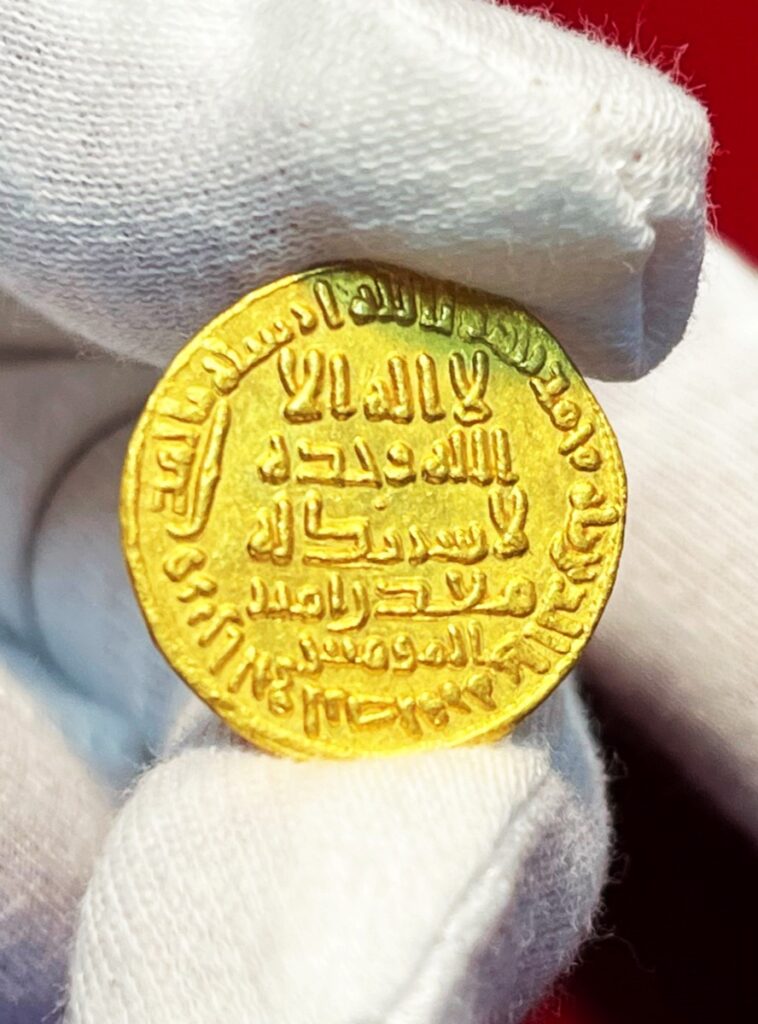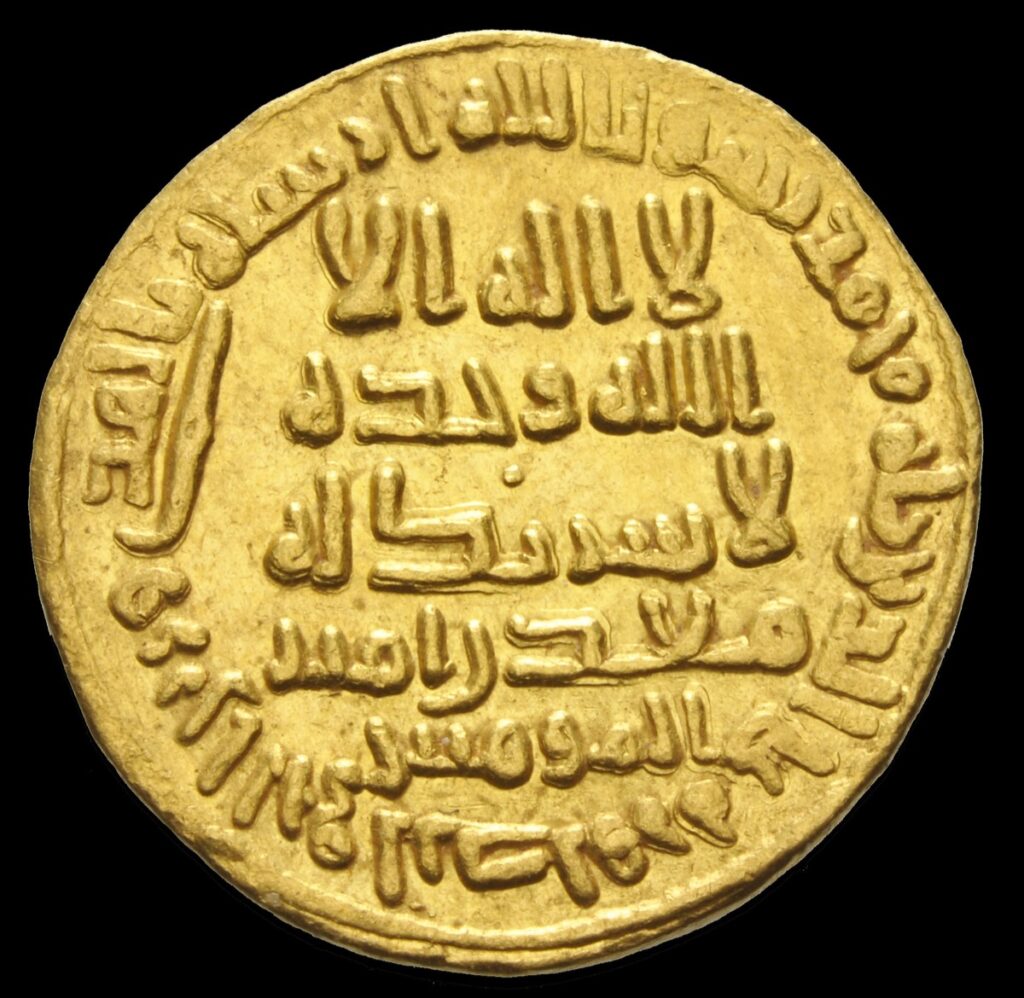
This is the first time that a coin from this specific year, AH 93 (= 711/12 AD), has ever come to auction, making it one of the most historically significant and highly desirable of Islamic coins.
LONDON, OCTOBER 2022: An exceptionally rare ‘Mine of the Commander of the Faithful’ Islamic gold coin dating from AD 712 is being offered at auction for the first time.
While most Umayyad gold coins (from the Muslim dynasty that ruled the Islamic world from AD 660 to 750) are fairly common, ones that bear the words ‘Ma’din Amir al-Mu’minin’ in the fourth and fifth lines on the front of the coin, which translates as ‘Mine of the Commander of the Faithful’, are rarely seen.
The coin, a gold dinar, will be offered in Classical Numismatic Group’s Islamic auction in London on 27th October, and is expected to fetch in excess of £700,000.
Specialist in Islamic coins at Classical Numismatic Group, Stephen Lloyd tells us: “These remarkable Umayyad dinars with the enigmatic ‘Mine of the Commander of the Faithful’ are small, beautiful, astonishingly rare historical documents. They bear witness to a time when the gold of Arabia helped an Umayyad caliph rebuild some of the holiest and most important sites in the Islamic world.”
‘Commander of the Faithful’ was the formal title of the caliph (the ruler of the Muslim community), and is in fact an older term than khalifa, meaning ’successor’, from which the modern word ‘caliph’ is derived.
These special coins are the earliest gold dinars that preserve the caliph’s more ancient title.

The caliph referred to on this coin was al-Walid I (AH 86-96 / AD 705-715), who was the sixth Umayyad caliph.
He led the Umayyad armies to victory, conquering the Maghreb, Spain, Sind and Transoxiana. Affluence from the invasions enabled him to finance impressive public works, such as the Al-Aqsa Mosque in Jerusalem, Prophet’s Mosque in Medina and the Great Mosque of Damascus. He instigated social welfare programs for the poor, and his reign saw peace alongside prosperity.
The word ‘Ma’din’ in the coin’s inscription: ‘Ma’din Amir al-Mu’minin’, or ‘Mine of the Commander of the Faithful,’ translates as ‘mine’, a meaning that can be used literally and metaphorically – a topic that has been hotly debated for more than a century.
Some scholars believe that it literally refers to the place that the gold was extracted from: a mine in Arabia owned by al-Walid I himself. It is well-known that al-Walid I was very active in Mecca and Medina around the time that these special coins were struck.
Others have argued that Ma’din could mean ‘residence’, or ‘ancestral place’, such as the Holy City of Medina in the present-day Kingdom of Saudi Arabia.
The special die (an engraved piece of metal used to strike the coin) with the ‘Mine of the Commander of the Faithful’ inscription is known to have been in use for at least three years. Other dinars struck from the same die can be identified, including one which is dated AH 91 – two years earlier than this coin.
Stephen tells us: “It is exceptional for a coin die to survive for this long, without breaking through wear and tear. This longevity supports the view that these coins were only ever struck in small quantities, which is consistent with their great rarity today.”
This newly-discovered date, AH 93, is the latest known year in which dinars with this special inscription were struck. This is the first occasion that a coin of this particular year has ever been offered at auction. It is among the most important historical Islamic coins ever to appear on the market, and interest from around the globe is greatly anticipated.







